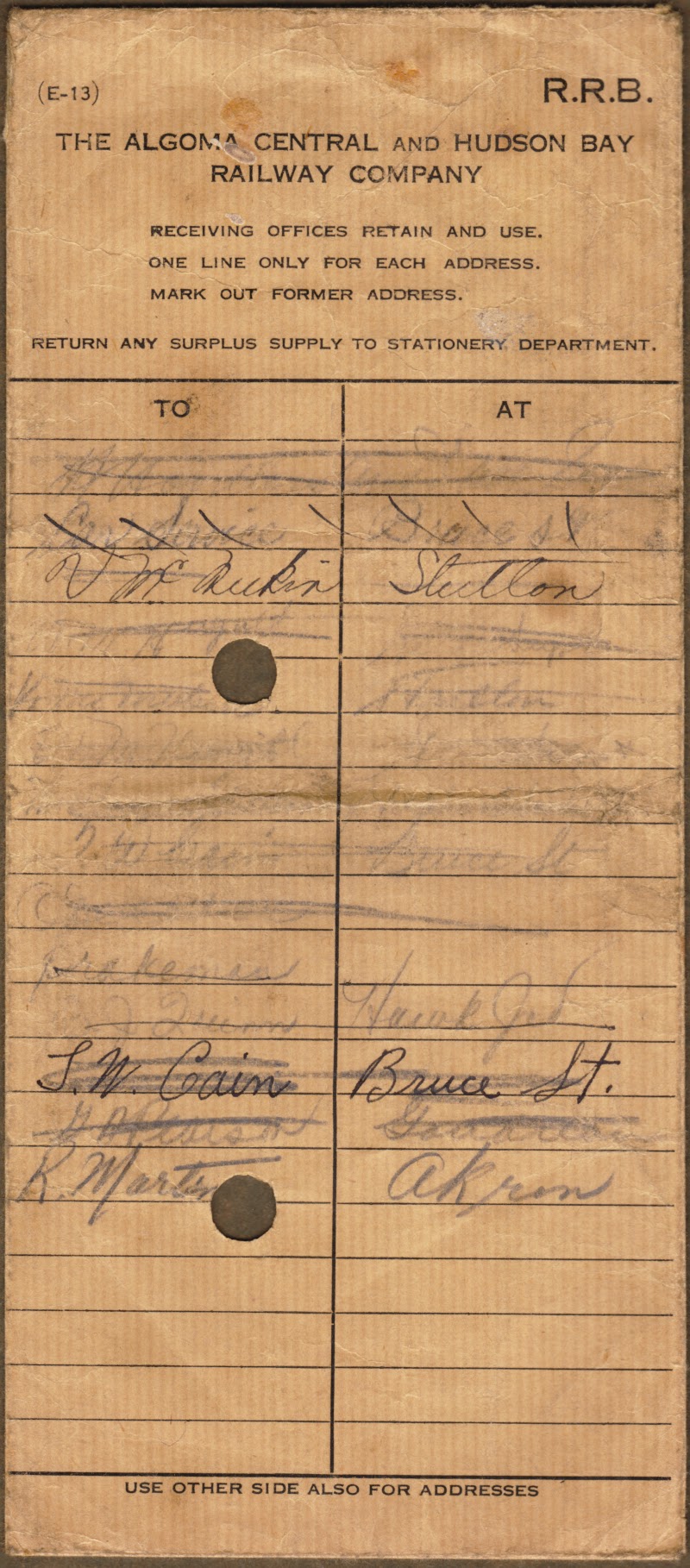Ditto stencils and pencil on newsprint were used by the Algoma Central Railway's Maintenance of Way officials to document staffing changes, caution against unsafe practices and to convey work assignments.
As you will observe, the common thread in most of these items is that they mentioned Rolly Martin during his brief maintenance of way career with the ACR.
As obsolete as a steam locomotive or a maintenance of way 'speeder' ... Ditto stencils were a mainstay of school teachers before affordable photocopying.
The stencil was inserted in a typewriter (to produce the copies seen below) and the hammers struck a thin purple 'carbon' sheet (or the message/image could be written/drawn using a normal pen), leaving a residue of purple letters on the back sheet of sturdy white paper.
After removing the top carbon sheet, the stencil's upper edge was clipped onto the drum of the Ditto machine. The drum was rotated by hand (or electrically) to bring the sturdy paper with purple letters residue into contact with a light coating of alcohol, and then a sheet of copy paper. With each drum rotation, the alcohol enabled a small amount of the 'purple substance' to be transferred to a single sheet of paper ... making one copy. After running off 200 or so copies - which became fainter and fainter - the purple carbon residue was depleted and another stencil had to be prepared from scratch.
In the 1960s, 'freshly' copied Ditto handouts were treasured by some students for their distinctive alcohol smell. Probably composed of neuro-toxic methyl alcohol and other chemicals, Ditto solution probably decreased our collective IQ by a point with each 'fresh' exposure.
> At LC Gagnon's retirement, I think it was a student gift presenter who joked that they should mount a plaque dedicated to him by the Ditto machine. Over the years, he was a big believer in concisely documenting the key points, themes or ideas to remember for his English and History students using this technology.
 |
| from: Algoma Central Railway; OS Nock; 1975; A&C Black. |
 |
| from: Maintenance of Way, Rules & Instructions; 1939; Canadian National Railways. |
 |
| from: Algoma Central Railway; OS Nock; 1975; A&C Black. |
This 4 x 9.5 inch interdepartmental mail envelope was probably used to send the two newsprint-based (above) instructions to Rolly.





